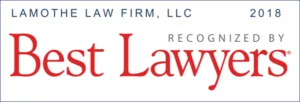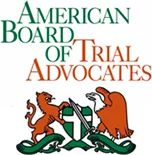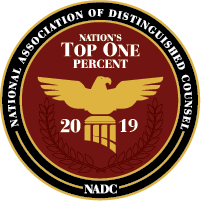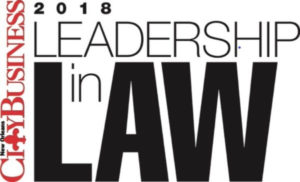 Attorney Richard Martin recently published another maritime article for attorneys in the Louisiana Association for Justice’s May edition of Louisiana Advocate. Both Frank Lamothe and Mr. Martin are considered some of the best admiralty and maritime lawyers in Louisiana and are extremely skilled trial lawyers. Here’s the article:
Attorney Richard Martin recently published another maritime article for attorneys in the Louisiana Association for Justice’s May edition of Louisiana Advocate. Both Frank Lamothe and Mr. Martin are considered some of the best admiralty and maritime lawyers in Louisiana and are extremely skilled trial lawyers. Here’s the article:
Using Ruiz v. Shell Oil Company in a Jones Act Case
We’ve all heard about platform injury cases going up in smoke when the third party platform owner defendant invoked the Ruiz “borrowed employee” defense.1 But, are you aware that the Ruiz test can help in a Jones Act case? Or that your client can be injured ashore and still be a “Jones Act” plaintiff? Here’s a bit of background and how it works.
The question of whether a worker has become a borrowed servant is a question of law for the district court to determine.2 However, the “analysis used to determine that question is fact driven.”3 The borrowed servant doctrine was originally recognized by the Supreme Court as a way of holding the borrowing employer liable under respondeat superior for the negligence of any employee he had borrowed.4 The U.S. Fifth Circuit has used the doctrine to give the borrowing employer a shield from tort liability from its borrowed employee under the LHWCA. Not a good result for the fixed platform plaintiff. However, what’s sometimes good for a fixed platform defendant can be bad for a Jones Act defendant because the Ruiz factors also apply to the borrowed employee issue in a Jones Act case.5
The express language of the Jones Act requires that an employer-employee relationship exist before liability may be imposed.6 “A Jones Act claim … requires proof of an employment relationship either with the owner of the vessel or with some other employer who assigns the worker to a task creating a vessel connection ….”7 There has never been any question that the Jones Act applies only between employees and their employers.8 However, the employer need not be the owner of the vessel,9 and independent contractors may be liable under the Act.10 Further, a third person who borrows a worker may become the employer if the borrowing employer assumes sufficient control over the worker.11
Control is the critical inquiry. Factors indicating control over an employee include payment, direction, and supervision of the employee. Also relevant is the source of the power to hire and fire. The control which is exercised must be substantial; the mere possibility of some control over the actions of an employee will not suffice to find an employer-employee relationship.12 In determining a seaman’s employer, a court must look to “the plain and rational meaning of employment and employer.”13
Even if a seaman is deemed to be a borrowed servant of one employer, this does not automatically mean that he ceases to be his immediate employer’s servant for Jones Act purposes.14 It is possible for a seaman to have more than one Jones Act employer.15 Further, the Act says nothing about the place where the injury occurs, nor does it require that his tasks at the time he is injured be related to service of the ship.16 Therefore, once it is established that a worker is a seaman, the Jones Act permits him to recover from his employer even for injuries received while he is on shore.17 Thus, just as the place of injury is not decisive, the situs of the employee’s work is not determinative in a Jones Act case, and a seaman does not lose his status when he is temporarily assigned by his employer to duties off the vessel.18
Usually, the question of who is the Jones Act “employer” arises when the plaintiff is directly employed by a manpower recruiter and is injured aboard a vessel owned by a third-party. Clearly, the manpower recruiter qualifies as a Jones Act employer if it sends the plaintiff to work on a vessel. But what about the vessel owner and the vessel? Do you simply have a general maritime negligence bench trial claim against the owner, or a Jones Act claim with a jury? Does the plaintiff also have a claim for unseaworthiness? If your client has this set of background facts, apply the Ruiz factors19 to determine if the non-direct employer vessel owner might also be a Jones Act employer who faces a concurrent unseaworthiness claim.
1 In Ruiz v. Shell Oil Co., 413 F.2d 310 (5th Cir. 1969), the U.S. Fifth Circuit set out nine factors which must be considered determining borrowed employee status: (1) Who had control over the employee and the work he was performing, beyond mere suggestion of details or cooperation? (2) Whose work was being performed? (3) Was there an agreement, understanding or meeting of the minds between the original and borrowing employer? (4) Did the employee acquiesce in the new work situation? (5) Did the original employer terminate his relationship with the employee? (6) Who furnished the tools and the place of performance? (7) Was the new employment over a considerable length of time? (8) Who had the right to discharge the employee? And, (9) Who had the obligation to pay the employee? See also Brown v. Union Oil of California, 984 F.2d 674 (5th Cir. 1993).
2 In re Weeks Marine, Inc., 88 F.Supp.3d 593, 597 (M.D. La. 2015); Melancon v. Amoco Production Co., 834 F.2d 1238, 1244 (5th Cir.1988), quoting Gaudet v. Exxon Corp., 562 F.2d 351, 356 (5th Cir.1977), cert. denied, 436 U.S. 913, 98 S.Ct. 2253, 56 L.Ed.2d 414 (1978).
3 Fairley v. Murphy Exploration & Production Co., 58 F.Supp.3d 641, 645, No. 13–6495, 2014 WL 5780579, at *4 (E.D. La.2014).
4 Standard Oil v. Anderson, 212 U.S. 215, 29 S.Ct. 252, 53 L.Ed. 480 (1909).
5 Hall v. Diamond M. Co., 635 F.Supp. 362 (E.D. La.1986), on remand from 732 F.2d 1246 (5th Cir.1984); Dennis v. Calm C’s, Inc., 2011 WL 3898045 (E.D. La.2011).
6 Spinks v. Chevron Oil Co., 507 F.2d 216 (5th Cir. 1975), clarified, 546 F.2d 675 (5th Cir. 1977).
7 Guidry v. South Louisiana Contractors, Inc., 614 F.2d 447, 452 (5th Cir. 1980).
8 Moragne v. States Marine Lines, Inc., 398 U.S. 375, 394, 90 S.Ct. 1772, 26 L.Ed.2d 339 (1970); Panama R.R. v. Johnson, 264 U.S. 375, 387-388, 44 S.Ct. 391, 68 L.Ed. 748 (1924).
9 Barrios v. Louisiana Construction Materials Co., 465 F.2d 1157 (5th Cir. 1972).
10 Mahramas v. American Export Isbrandtsen Lines, Inc., 475 F.2d 165 (2d Cir. 1973).
11 Ruiz v. Shell Oil Co., 413 F.2d 310 (5th Cir. 1969).
12 Guidry, 614 F.2d at 455.
13 Cosmopolitan Shipping Co. v. McAllister, 337 U.S. 783, 791, 69 S.Ct. 1317, 1321, 93 L.Ed. 1692 (1949).
14 Spinks, 507 F.2d at 224.
15 Id. at 225-26.
16 Higginbotham v. Mobil Oil Corp., 545 F.2d 422 (5th Cir. 1977), rev’d on other grounds, 436 U.S. 618, 98 S.Ct. 2010, 56 L.Ed.2d 581 (1978); Crafton v. Tennessee Valley Sand & Gravel Co., 408 F.2d 1096 (5th Cir.), cert. denied, 396 U.S. 827, 90 S.Ct. 73, 24 L.Ed.2d 78 (1969).
17 O’Donnell v. Great Lakes Dredge & Dock Co., 318 U.S. 36, 63 S.Ct. 488, 87 L.Ed. 596 (1943); Vincent v. Harvey Well Service, 441 F.2d 146 (5th Cir. 1971). Cf. Aguilar v. Standard Oil Co., 318 U.S. 724, 63 S.Ct. 930, 87 L.Ed. 1107 (1943) (maintenance and cure available for seaman’s injuries received while on shore leave).
18 Higginbotham, supra.
19 The Ruiz factors are:
- Who had control over the employee and the work he was performing, beyond mere suggestion of details or cooperation?
- Whose work was being performed?
- Was there an agreement, understanding or meeting of the minds between the original and borrowing employer?
- Did the employee acquiesce in the new work situation?
- Did the original employer terminate his relationship with the employee?
- Who furnished the tools and the place of performance?
- Was the new employment over a considerable length of time?
- Who had the right to discharge the employee?
- Who had the obligation to pay the employee?








